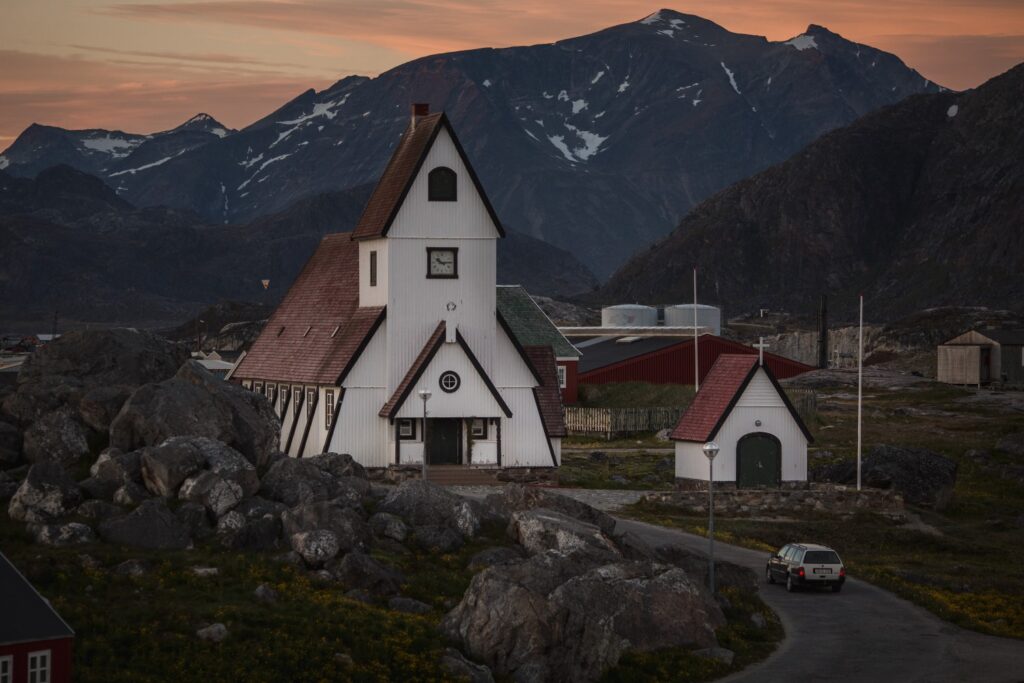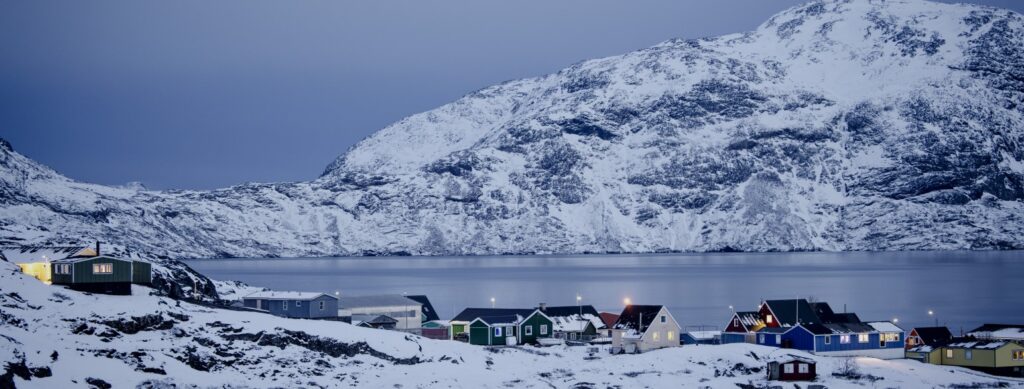
MADS PIHL/VISIT GREENLAND, 2016
With an area of about 32,000 km2, Kommune Kujalleq, the southernmost municipality of Greenland located between 59° and 62° north, is the smallest of the five municipalities with just under 6,500 inhabitants. The southern location and a branch of the Gulf Stream provide a relatively mild climate and hence opportunities for agriculture and sheep farming, which is why South Greenland is often referred to as ‘Greenland’s pantry’. The municipality includes the towns of Nanortalik, Qaqortoq and Narsaq, as well as 11 settlements. The administrative centre is Qaqortoq.
Kommune Kujalleq is the only place in the country with a road connection between settlements, as several sheep farms are linked by dirt roads and connected to the nearby settlements. The Qorlortorsuaq hydropower plant supplies the towns of Narsaq and Qaqortoq with electricity. Narsarsuaq is home to one of the two international airports on the west coast.
The municipality is also home to several historic settlements from the Middle Ages, Norse ruins lie side by side with modern farms. Some of the archaeological sites and nearby sheep farms are part of the UNESCO World Heritage Area of Kujataa.
The region is of geological interest and rich in mineral resources with several active or potential mining projects, including the gold mine in Nalunaq (Kirkespirdalen) northeast of Nanortalik. To this should be added projects such as Killavaat Alannguat (Kringlerne) near Qaqortoq and Kuannersuit (Kvanefjeld) 7 km from Narsaq, both containing rare earth elements. Kuannersuit also has significant amounts of the radioactive elements uranium and thorium.
A possible mine at Kuannersuit has triggered concerns about radioactive contamination, including deteriorating or impossibility of business opportunities such as tourism, sheep farming and fishing, and undermining the potential of the UNESCO World Heritage Area of Kujataa. Whether it should be allowed to extract radioactive elements is a question that over decades, locally and nationally, has led to political turmoil, demonstrations and debate. The turmoil has been fuelled by opposition to nuclear power around the world. After the 2021 election, Inatsisartut (Parliament) passed an act that does not immediately allow the extraction of radioactive elements. In the April 2021 municipal elections, IA, who are declared opponents of uranium, won the office of mayor.
The municipality’s business strategy is based on four pillars: fisheries, food production, tourism and extraction of mineral resources, and the strategy is closely linked to the national political decision to establish an airport in Qaqortoq.
The municipality is challenged by relocation from the region, in social fields and by lack of employment. There is a desire to generate economic growth, new jobs and revenue from extraction of mineral resources, but not at the expense of developing agriculture, fishing and tourism.

